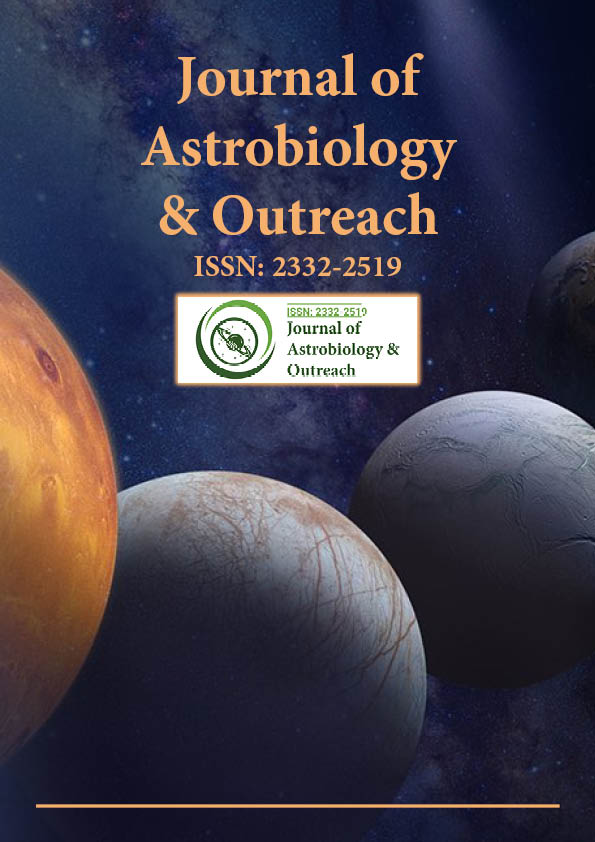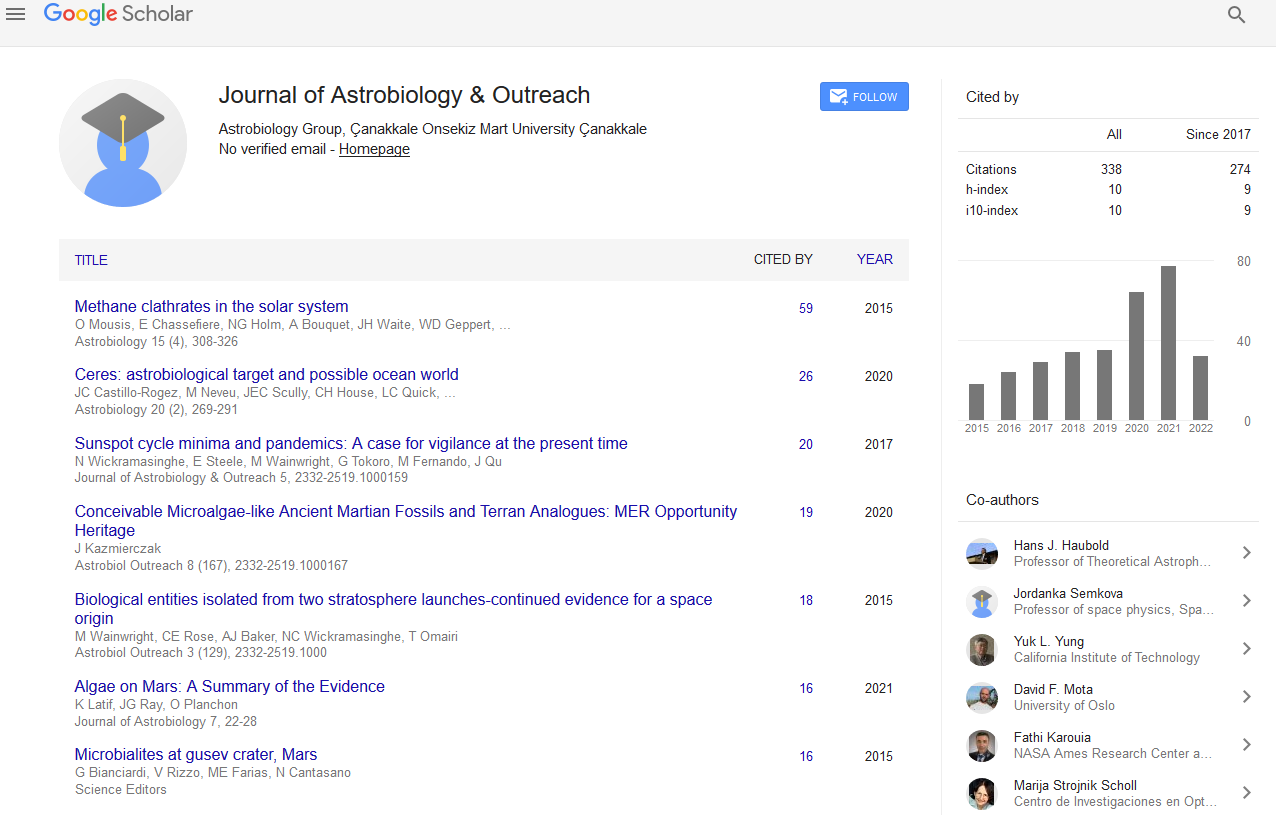Indexed In
- Open J Gate
- Academic Keys
- JournalTOCs
- RefSeek
- Hamdard University
- EBSCO A-Z
- OCLC- WorldCat
- Google Scholar
Useful Links
Share This Page
Journal Flyer

Open Access Journals
- Agri and Aquaculture
- Biochemistry
- Bioinformatics & Systems Biology
- Business & Management
- Chemistry
- Clinical Sciences
- Engineering
- Food & Nutrition
- General Science
- Genetics & Molecular Biology
- Immunology & Microbiology
- Medical Sciences
- Neuroscience & Psychology
- Nursing & Health Care
- Pharmaceutical Sciences
Wickramasinghe NC
Wickramasinghe NC
Buckingham Centre for Astrobiology (BCAB), Buckingham University,
United Kingdom
Publications
-
Review Article
Rosetta Images of Comet 67P/Churyumov–Gerasimenko: Inferences from Its Terrain and Structure
Author(s): Wallis MK and Wickramasinghe NCWallis MK and Wickramasinghe NC
The Rosetta mission has given us remarkable images of comet 67P/C-G both from the orbiter, and recently from the Philae lander during its brief days before running out of power. Though its crust is very black, there are several indicators of an underlying icy morphology. Comet 67P displays smooth, planar ‘seas’ (the largest 600 m x 800 m) and flat-bottomed craters, both features seen also on comet Tempel-1. Comet 67P’s surface is peppered with mega-boulders (10-70 km) like comet Hartley-2, while parallel furrowed terrain appears as a new ice feature. The largest sea (‘Cheops’ Sea, 600 x 800 m) curves around one lobe of the 4 km diameter comet, and the crater lakes extending to ~150 m across are re-frozen bodies of water overlain with organic-rich debris (sublimation lag) of order 10 cm. The parallel furrows relate to flexing of the asymmetric and spi.. View More»
DOI: 10.4172/2332-2519.1000127

